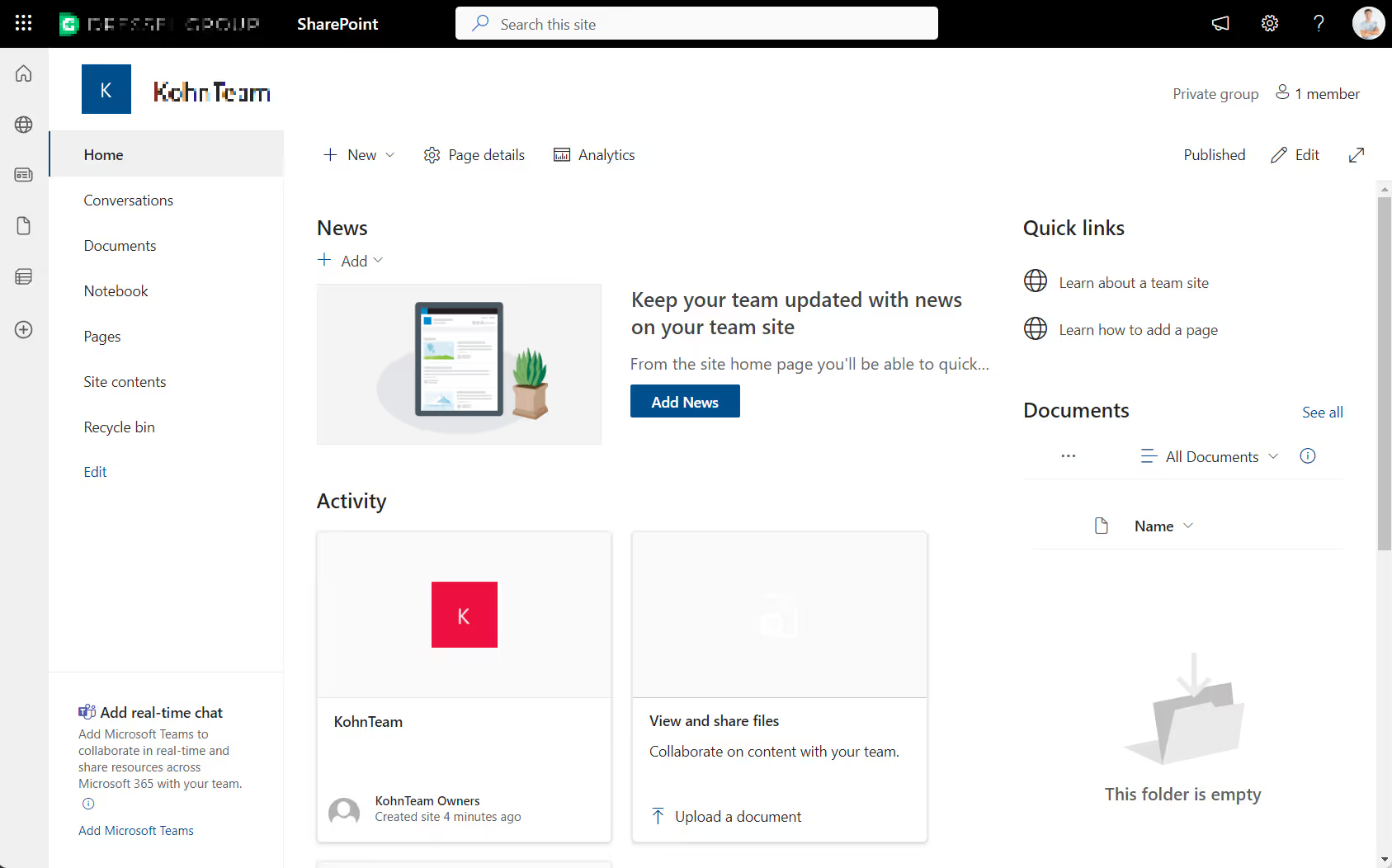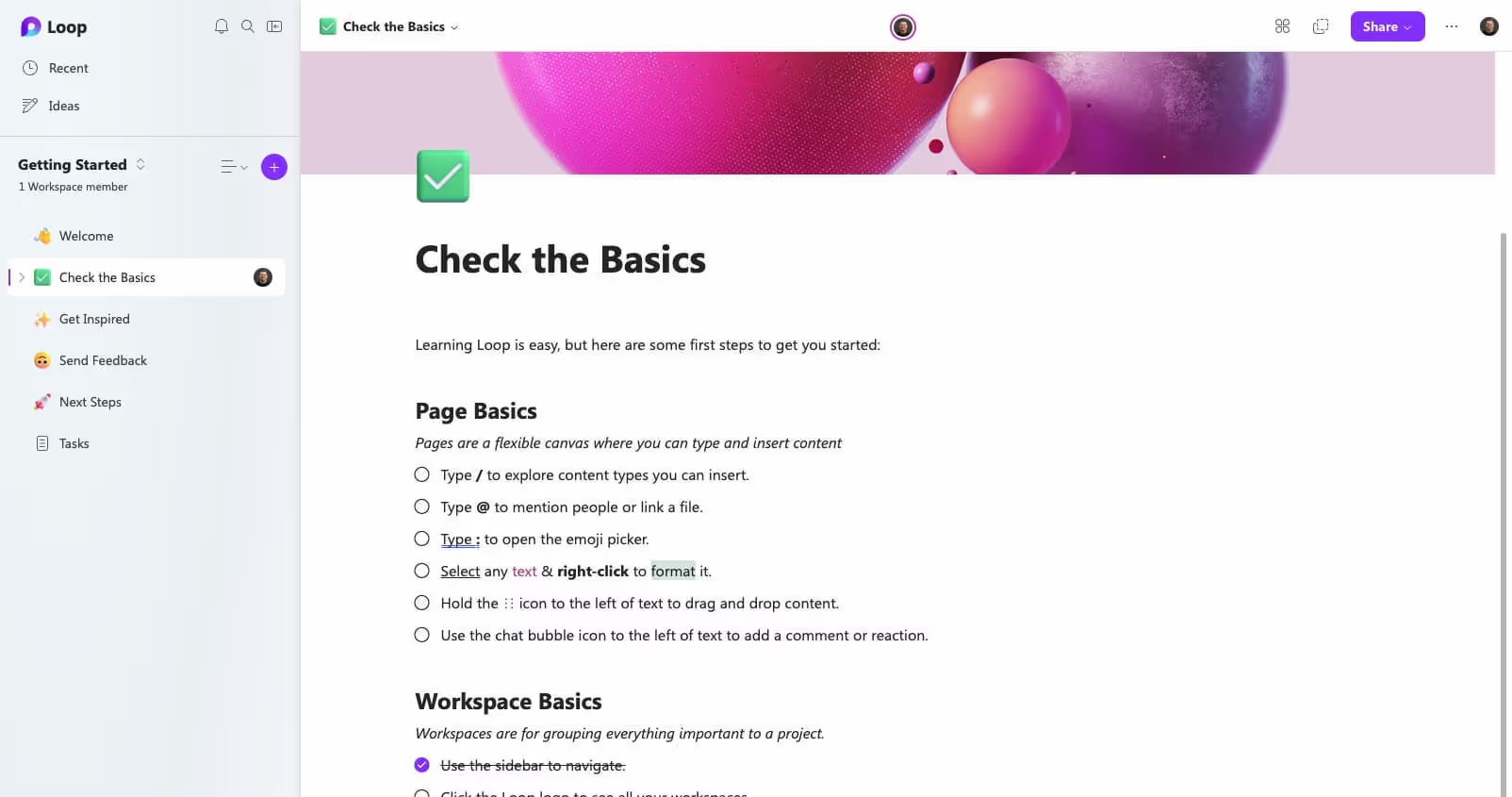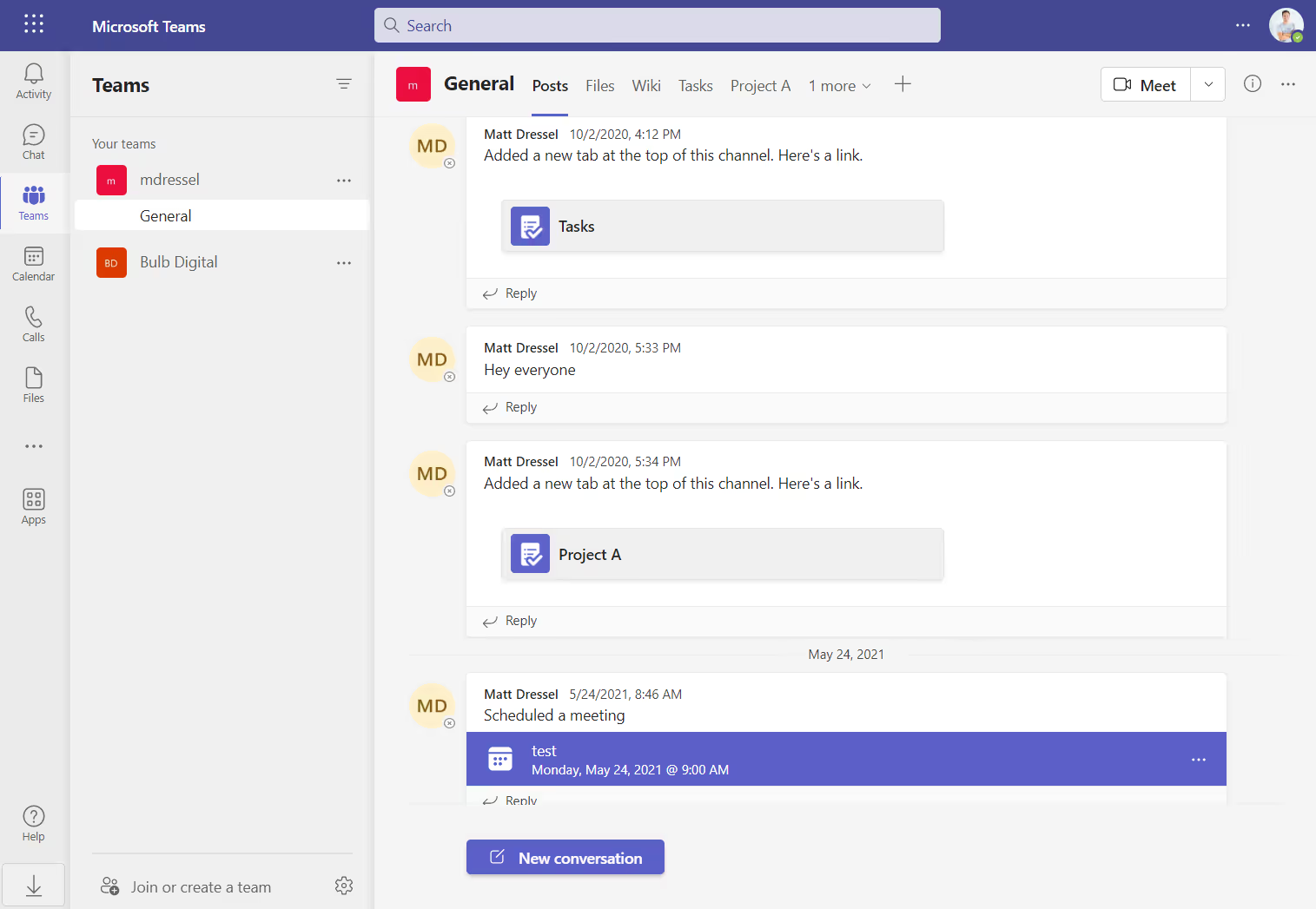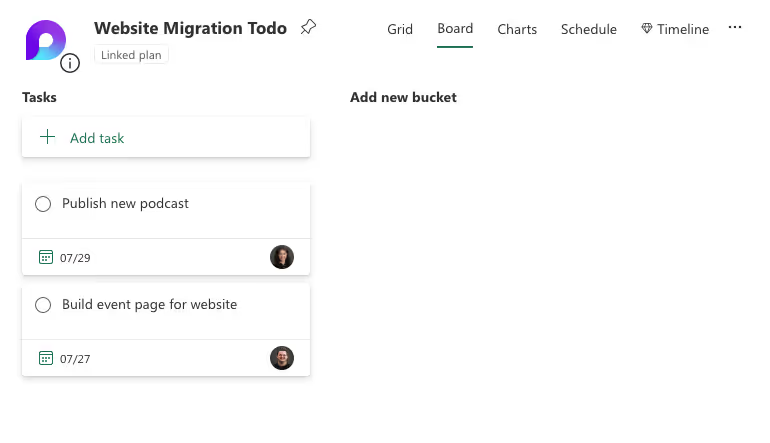What's the Best Collaboration Tool? Loop or SharePoint Team Site?
In today's blog, we're going to break down the key differences between SharePoint Team Sites and Loop when it comes to collaboration. Both are great options, but one might suit your needs better!
Intro
Now that Loop has been out for a little while, you may be starting to consider when you might use it over one of the other M365 tools. It's been stated that their marketing strategy focuses on "inspiring" instead of "instructing", and that comparison can be tricky to make. But I'll do my best.
Today we're going to focus on SharePoint Team Sites and how they're different from Loop.
If you aren't familiar with Team Sites, they're one of the two primary types of SharePoint sites aimed at collaborating in SharePoint with your "Team" as suggested in the title.
Loop serves the same purpose, but stands alone and isn't part of the SharePoint app.
Which should you use when? We're going to break down the differences and hopefully help you answer that question.
Interface and Navigation
While both tools are used within a web browser, they have some key differences in how they look.
Team Sites

You can instantly identify a Team Site by its layout and the left-hand navigation. There are 4 main parts of the interface:
- The Header - This has the site logo, title, and member count
- Action Bar - Here you'll find any actions you can take like editing the page and publishing changes
- Left-Hand Navigation - All resources you might want one click away. This is what tells you when it is a team site vs communication site (learn more in Matt K's blog here)
- Page Content - All the widgets and content setup for this particular page. Often shows things like quick links, documents, and news
Loop

Loop has a bit simpler interface, and is primarily made up with 3 main areas
- The Left Menu - This is your navigation within your workspace. You'll find links to recent pages, ideas you've created, followed by all the pages that have been created for this workspace that you can structure and nest however you'd like.
- The Page Menu - The bar along the top shows you the name of the current page, breadcrumbs, who has the page open, sharing options, and a few other page-level settings.
- Page Content - Similar to Team Sites, the page content takes up the most real estate here. Loop relies very heavily on a single column text-centric page structure with components throughout.
A lot of the elements that make up the page are similar in these two tools. The main deciding factor here is going to be how "custom" you want your page to appear. SharePoint has a stronger editor in that regard. But it can also be overwhelming with all the configuration and options. So, if you want simple, choose Loop.
Our Choice: Loop
Most of the time when we're collaborating with our team, the simpler the better.
Collaboration
What does it look like to actually work in these tools daily?

Team Sites
A team site itself doesn't actually facilitate much real-time collaboration. The majority of the collaboration that would happen on a Team Site would be working on documents together. So, if you had a document library where your team kept their working documents (for example, Word docs), you could both open that document up in Word and collaborate. So, while yes, the document is stored in the Team Site, Word is the actual tool facilitating the real-time collaboration.
There are other types of non-real-time collaboration that can happen on Team Sites, like building SharePoint Pages and managing Lists. This collaboration relies on things like versioning and drafts, so it's relatively structured.
Team Sites also benefit from the concept of having an actual "Team" (think Microsoft Teams) associated with them to simplify communication and permissions with your team. More on this later.
Loop
Loop is 100% real-time, all the time. As you edit pages, your coworkers in that workspace can see your edits, and you can see theirs. Think along the lines of real-time editing of a SharePoint page.
Versioning relies on "point in time" backups as opposed to "I made changes and clicked save, thus a version is created" backups.
Even when components are shared from Loop to another tool, it is always the most recent (live) version of the content.
This creates a sort of different way of collaborating than you may be used to. If you're the type of person who likes to keep edits private before sharing them, this may not be the tool for you. There is a way to do this via the "ideas" feature in Loop, but I would challenge you to try to adjust your working style (maybe culture?) first to get the benefits of real-time collaboration right within the tool, especially within smaller teams.
I'm not sure I can consider one of these tools "better" than the other, and more so just different use cases. If you have a strict, stepped (maybe regulated) process as your content gets worked on, you may prefer the benefits of a tool like SharePoint with tighter controls. If you're more on the side of "let's just get ideas out there, see what sticks, and refine it as we go", Loop is by far the better choice.
Our Choice: Both
We're a small team and don't have strict processes. We use a Team Site for things like our marketing working files and storage but use Loop when we want to bring an idea to life and want to make that process easy.

SELF ASSESSMENT
Is your business getting full value from your M365 subscription?
Billions of dollars are wasted each year on underused subscriptions. Take 3 minutes to find out where your tools are driving results, and where they’re holding you back.
Find Out Now

Is Team Communication Holding You Back?
Find Out in Just 2 Minutes.
Take our quick scorecard to uncover communication gaps and hidden barriers within your team.
Content Management
Let's get more tactical here - what options do we have to store data, and how are these systems different in that regard?

Team Sites
While Team Sites have pages you can build like Loop, where it sets itself apart is with its document system. A large amount of SharePoint revolves around document libraries and organizing all your working documents. It also has a strong metadata system, which allows you to do things like tag documents and create extra columns of information to live "with" your document. You can take it so much further than just "title" and "author".
If you want consistency across different document libraries, you can even establish columns at the site level so they can be used in multiple places, as well as create content types that will automatically sync the columns anywhere that content type is set on a library. For example, if you want to add an "Expiration" column to your "Policy" content type, anywhere that content type is being used will get an expiration field added to it.
Loop
Loop is different from Team Sites in this regard. Like we mentioned earlier, it leans pretty heavily on the "page" interface and encourages you to link out to documents stored in different places as opposed to upload them there.
Loop also leans on the idea of "content blocks" and "components". When you write up a paragraph in Loop, it's regarded as a content block. Each content block has individual controls to create a component, create comments, add reactions, or give "boosts" to draw attention to it.
Components can be made of one or more content blocks. I think we've covered enough of components in the previous sections, so I'll skip explaining them again.
So, which is better at content management? It really depends on the business need. This isn't exactly comparing apples to apples.
If you need something that has strict controls around things like versioning and tracking ancillary information about content, Team Sites are 100% the way to go.
If you don't have a document-heavy process, are ok with primarily text "content", and want everyone to be able to contribute easily, Loop is your choice here.
Integrations
It wouldn't be an M365 tool if it didn't integrate into the rest of the suite, right? Both tools have important integrations to call out.
Team Sites

Team Sites and "Teams" are so tightly integrated with each other, I have to mention it first. Every Team in Microsoft Team has a Team Site behind it (yes, I'm tired of Microsoft's confusing naming too). This Team Site is where all the files uploaded to channels and channel meetings get stored.
Team Sites are also easy to integrate into an existing SharePoint intranet. Managing content across different sites is relatively simple, and when you need to get something from your "working location" to published as corporate communication, it needs to be easy. Generally, we suggest that's the primary way information flows (from a team site to a communication site), but you could also pull other content into your Team Site if you needed to.
Loop
Because Loop is as simple of a tool as it is, it's going to rely heavily on integrations if they want to be able to support a wide range of business cases. While the integration list is rather short right now (with more on the way 😉), there's an important one that I want to call out, and that is task lists.
When you create a "task list" in Loop - note, this is a special component that has to be created from the slash menu, it actually creates a Planner board to store those tasks.

So, if you use Planner at your organization and want to create something from Loop as a task, you can use a Task board to get it all rolled up into your Planner assignments, and even Microsoft To Do. Any tasks created in that component get added under a single bucket on that Planner board, and any additional Task Lists created on that Loop page create another bucket on the same Planner board.


The task list component is VERY simple right now and doesn't leverage many of the out-of-the-box Planner fields at all, but I anticipate more will be on the way soon.
One of our favorite uses for Task Lists is for recurring meetings: We create a Loop page for an instance of that meeting with a Task List on it, then we convert it to a component that gets copied on to the next meeting note pages. That way the "current" tasks are always at the top of the meeting notes.
I'd love to see more integrations with other M365 tools like Power Automate and anticipate even some third party tools will get pulled in eventually. Again, this app is in its early stages, so I'm hoping to see more as it gets closer to launch.
Our Pick: Loop
This may be premature, but with more integrations on the way, I think Loop will be such a powerful tool. With Team Sites, you sort of subscribe yourself to "the Microsoft way of doing things" that I think Loop sidesteps and gives hope for more customizability in the end. I suppose we'll see how this hot-take lands a year or so from now.
A Few Quick Hits
Security

I'm no security expert, but here's a high level overview:
Team Sites: Traditional SharePoint Permissions - Owners, Contributors, and Visitors. All the data is well encrypted and safe. It really relies on the "Team" association as a control of who has access to the content.
Loop: Uses a "Roster" system that is not tied to any existing security group as far as I know. You manually choose individuals to add to the roster to get permissions to a workspace. You can also give permissions to an individual page, though external sharing is not supported at the time of writing. The storage system Loop uses is actually a new system called Syntex, which you can learn more about here.
I imagine Loop will leverage existing security groups at some point, but we'll see.
Use Cases
This isn't much that hasn't been said already, but to spell it out simply:
Team Sites are great for project management, document heavy collaboration, and knowledge sharing/storage.
Loop is great for brainstorming, ideation, or building a more "casual" knowledge-base.
The Winner
To be frank, it's almost a disservice to both tools to pit them against each other. They can accomplish similar goals, but each in their own unique ways, with neither being necessarily "better" than the other.
Many (including me) often slam Microsoft for throwing multiple tools/apps at the same problems. It can make things confusing to users who don't want to go into research mode every time they start something from scratch, just to discover they must learn a new tool.
I recently read an insightful perspective on this problem that has started to shift the way I think about it:
Think about Microsoft 365 as a toolbox, or a workshop. Sometimes there is one tool that is THE TOOL to use for specific problems - cutting crown molding? You won't get very far without a dual bevel miter saw.
But if you're just cutting a 2x4 in half - should you use that same miter saw? Or should you just use a basic circular saw?

Neither option is wrong in this case, they each have their pros and cons, and you may just prefer one over the other.
So, the best recommendation I have for you is next time you're tempted to set up a Team Site, consider trying Loop if you don't need all the structure that comes along with Team Sites.

.avif)





.jpg)






